Accepted Scientific Name: Gasteria cv. Little Warty
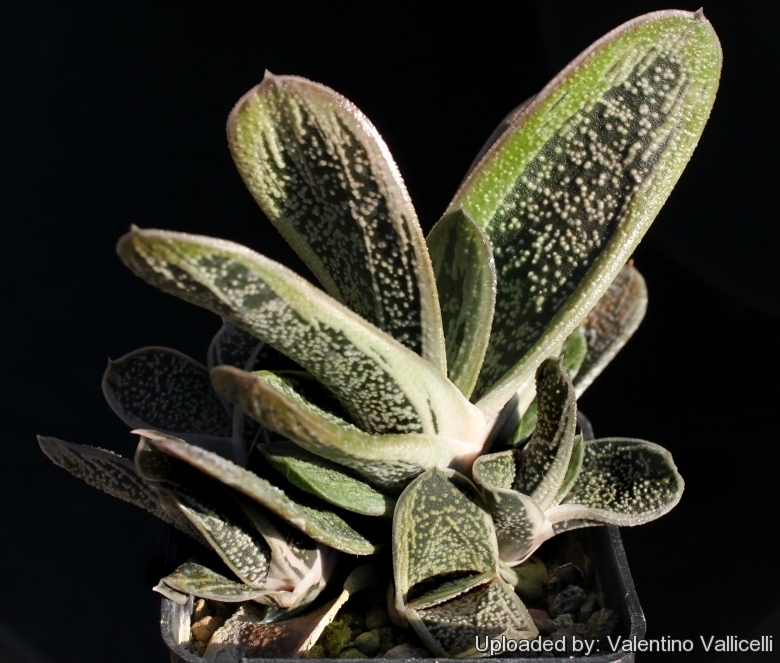
Gasteria maculata cv. Little Warty (Gasteria cv. Little Warty) Photo by: Valentino Vallicelli
As the name states, the leaves have beautiful bold markings mottled with some very interesting white warts on them, which make it a most pleasing plant! A must have for any collector of Gasteria!
Origin and Habitat: Horticultural hybrid (Gasteria batesiana x Gasteria 'Old Man Silver') Hybridizer: David Cumming (Australia)
Synonyms:
See all synonyms of Gasteria Little Warty
Description: Gasteria cv. Little WartySN|29437]]SN|989]] is a cross between Gasteria batesiania and Gasteria cv. Old Man SilverSN|989]]SN|29437]] obtained by the Australian hybridizer David Cumming .
It is a nice plant with attractive leaf colour that clumps easily and not so little in time, but slow. The white and green colour along with it hard plastic appearance make it looks very unusual. It is indeed quite unstable and several slightly different clones and growing forms are available.
Stem: Nearly stem less (acaulescent).
Roots: Succulent and cylindrical (terete). The roots are thick with little branching.
Leaves: Distichous or more or less spiralled, firm, bright green (to dark-green in full sun) with raised pale silvery-green or pale olive-green stripes and edge with lots of pearly tubercles (warts) in the upper and under sides. The leaf apex is obtuse bearing a mucro.
Remarks: There are some closely related and quite similar cultivars like ''Lime Warty'' and ''Lizard Warts''
The ''Little Warty'' is one of the ancestor of Gasteraloe cv. Green IceSN|21474]]SN|21474]].
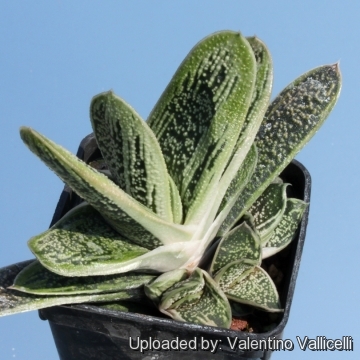 Gasteria maculata cv. Little Warty (Gasteria cv. Little Warty) Photo by: Valentino Vallicelli
Gasteria maculata cv. Little Warty (Gasteria cv. Little Warty) Photo by: Valentino Vallicelli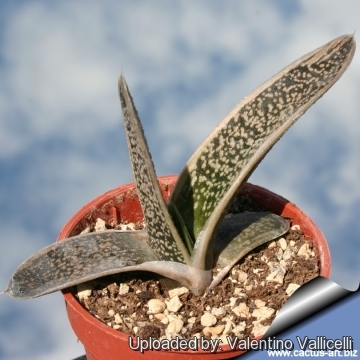 Gasteria maculata cv. Little Warty (Gasteria cv. Little Warty) Photo by: Valentino Vallicelli
Gasteria maculata cv. Little Warty (Gasteria cv. Little Warty) Photo by: Valentino Vallicelli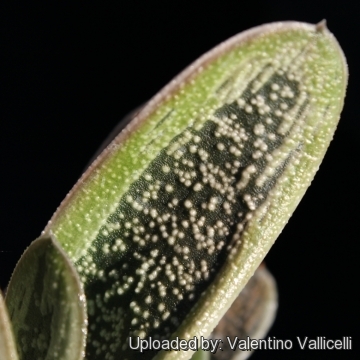 Gasteria maculata cv. Little Warty (Gasteria cv. Little Warty) Photo by: Valentino Vallicelli
Gasteria maculata cv. Little Warty (Gasteria cv. Little Warty) Photo by: Valentino Vallicelli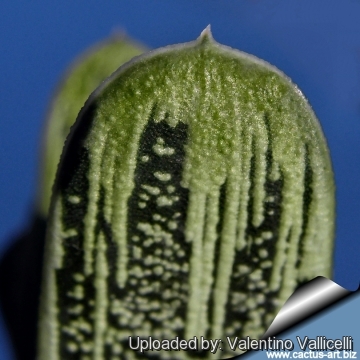 Gasteria maculata cv. Little Warty (Gasteria cv. Little Warty) Photo by: Valentino Vallicelli
Gasteria maculata cv. Little Warty (Gasteria cv. Little Warty) Photo by: Valentino Vallicelli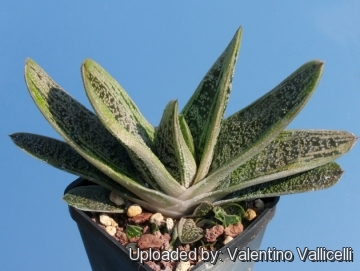 Gasteria maculata cv. Little Warty (Gasteria cv. Little Warty) Photo by: Valentino Vallicelli
Gasteria maculata cv. Little Warty (Gasteria cv. Little Warty) Photo by: Valentino Vallicelli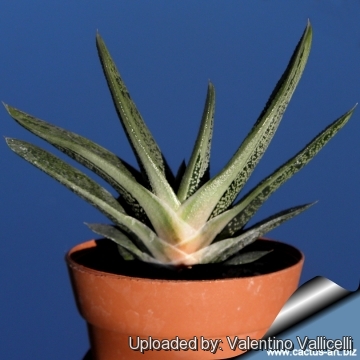 Gasteria maculata cv. Little Warty (Gasteria cv. Little Warty) Photo by: Valentino Vallicelli
Gasteria maculata cv. Little Warty (Gasteria cv. Little Warty) Photo by: Valentino Vallicelli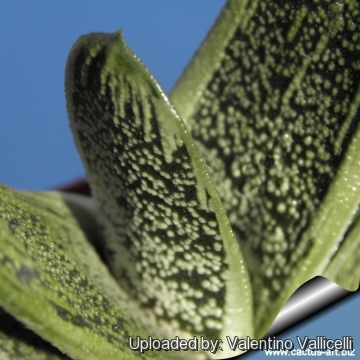 Gasteria maculata cv. Little Warty (Gasteria cv. Little Warty) Photo by: Valentino Vallicelli
Gasteria maculata cv. Little Warty (Gasteria cv. Little Warty) Photo by: Valentino Vallicelli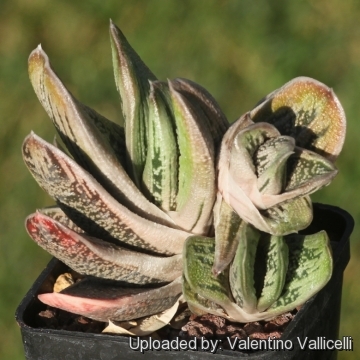 Gasteria maculata cv. Little Warty (Gasteria cv. Little Warty) Photo by: Valentino Vallicelli
Gasteria maculata cv. Little Warty (Gasteria cv. Little Warty) Photo by: Valentino VallicelliCultivation and Propagation: They are slow growing but long-lived plants of easy culture which makes them a good houseplant and can be an excellent subject for the beginning gasteriaphile (it can grow easily on window sills, verandas and in miniature succulent gardens where they are happy to share their habitat with other smaller succulent plants, or in outdoor rockeries) Need light shade to shade, but will take full sun part of the day. (with some sun exposure the leaf develops a nice reddish tint and remain compact) They are tolerant of a wide range of soils and habitats, but prefer a very porous potting mix to increase drainage. During the hot summer months, the soil should be kept moist but not overly wet. The plants are fertilized only once during the growing season with a balanced fertilizer diluted to ½ the recommended strength. During the winter months, water only when the soil becomes completely dry. Frost hardy to -1°C (Or less).
Propagation: The Gasteria is easily propagated by the removal of offshoots or by leaf cuttings in spring or summer. To use offshoots It should stay intact in the post though every head will have its own root system and it could easily be split for propagation.
To propagate by leaf cuttings, remove a leaf and let it lie for about one month (e.g. in a cool window sill), giving the wound time to heal. Then lay the leaf on its side with the basal part buried in the soil. This leaf should root within a month or two, and small plants will form at the leaf base. Young plants can be harvested the following season. They can also grown from seed. Seed should be sown during summer in sandy well drained soil and preferably protected from full sun. The seedlings are slow growing and can be planted out in small containers when they are large enough to handle. The soil should preferably be enriched with compost. They react very well to a liquid organic fertilizer.
Your Photos
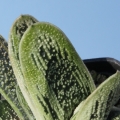
by Valentino Vallicelli



















